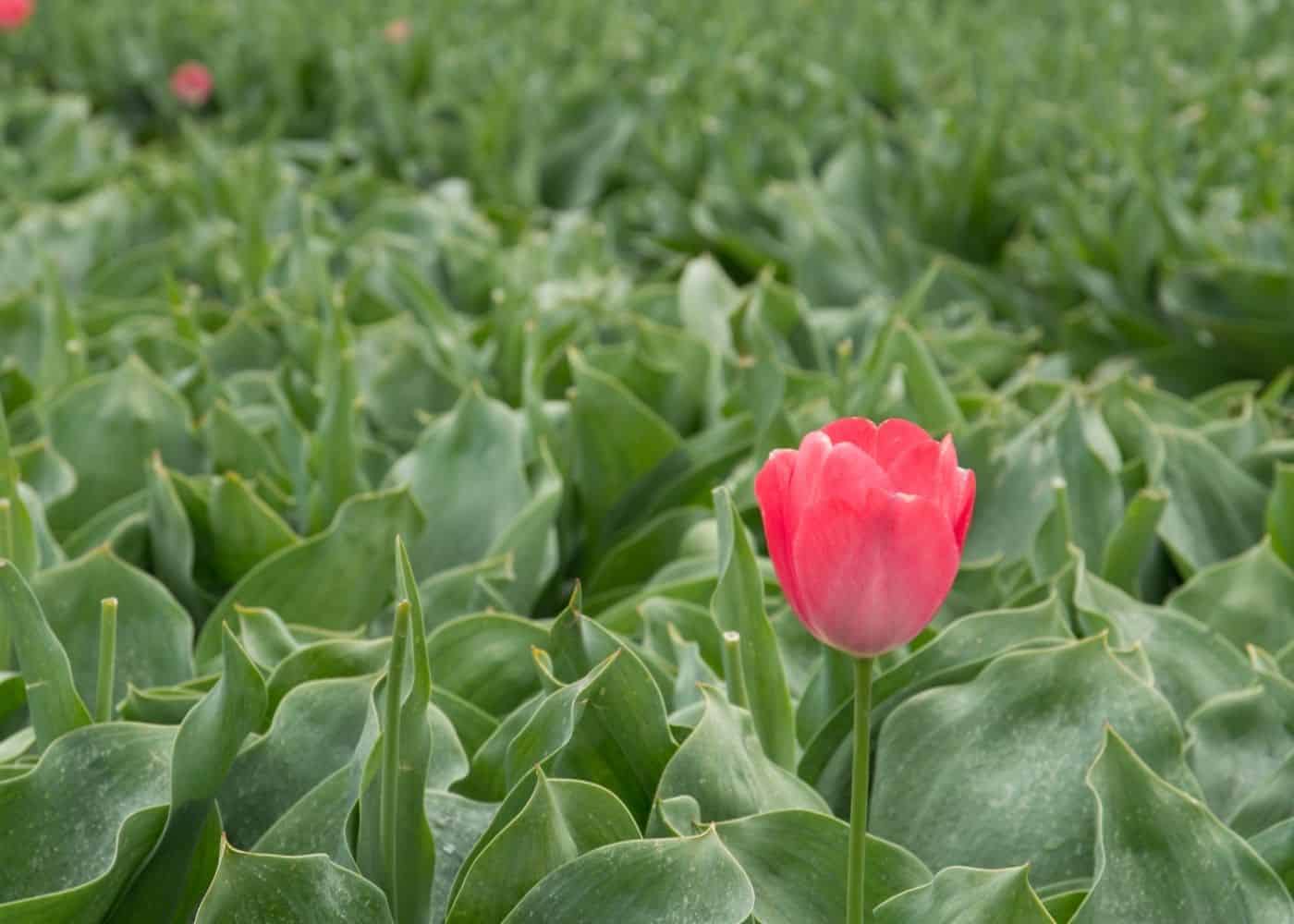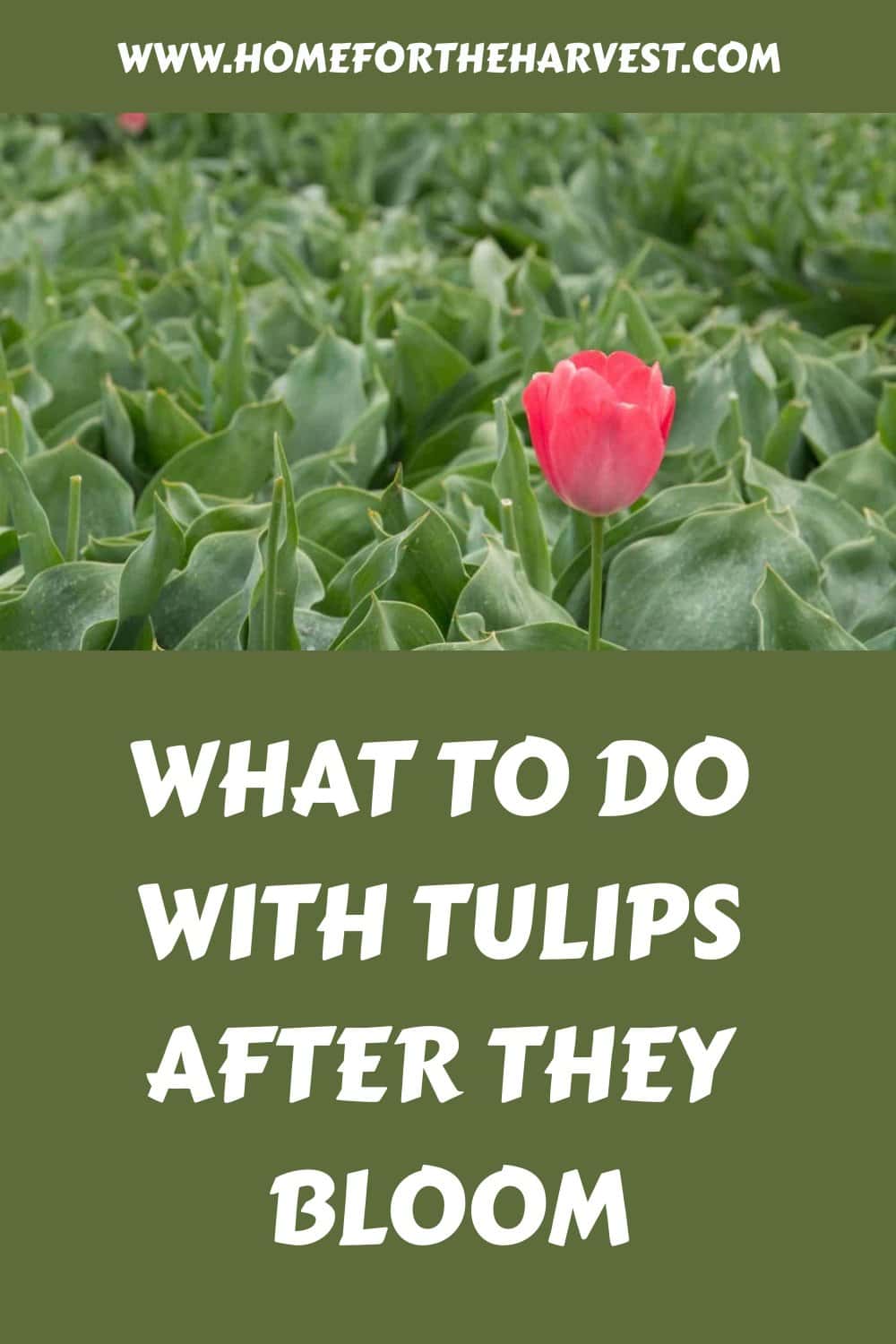After your tulips bloom, use pruning shears to snip off the dead flower heads. Don’t trim the leaves off your growing tulip plants just yet. The remaining foliage will create the energy needed for next year’s flowers.
If your soil is poor, a high-quality bulb fertilizer can be applied after the tulips have finished blooming. Wash any stray fertilizer off the foliage and keep the tulips well-watered for about a month after blooming. Once the foliage dies back naturally, you can either ignore the dormant bulbs until next year or dig up and store them for fall planting.

Post-bloom tulip care basics
When your tulips’ lives are coming to a wilting end, don’t rip them out! Instead, only remove the dead flowers by trimming the stems. This process is known as deadheading. The plant’s green leaves should stay on the plant until they have naturally turned yellow and dried.
Deadheading the tulips right after the flowers fade is crucial because it prevents the plants from putting their energy into seed development. By trimming off the flower head, the plant can focus its energy on producing bulb offsets below the ground (this is how tulips multiply true-to-form).
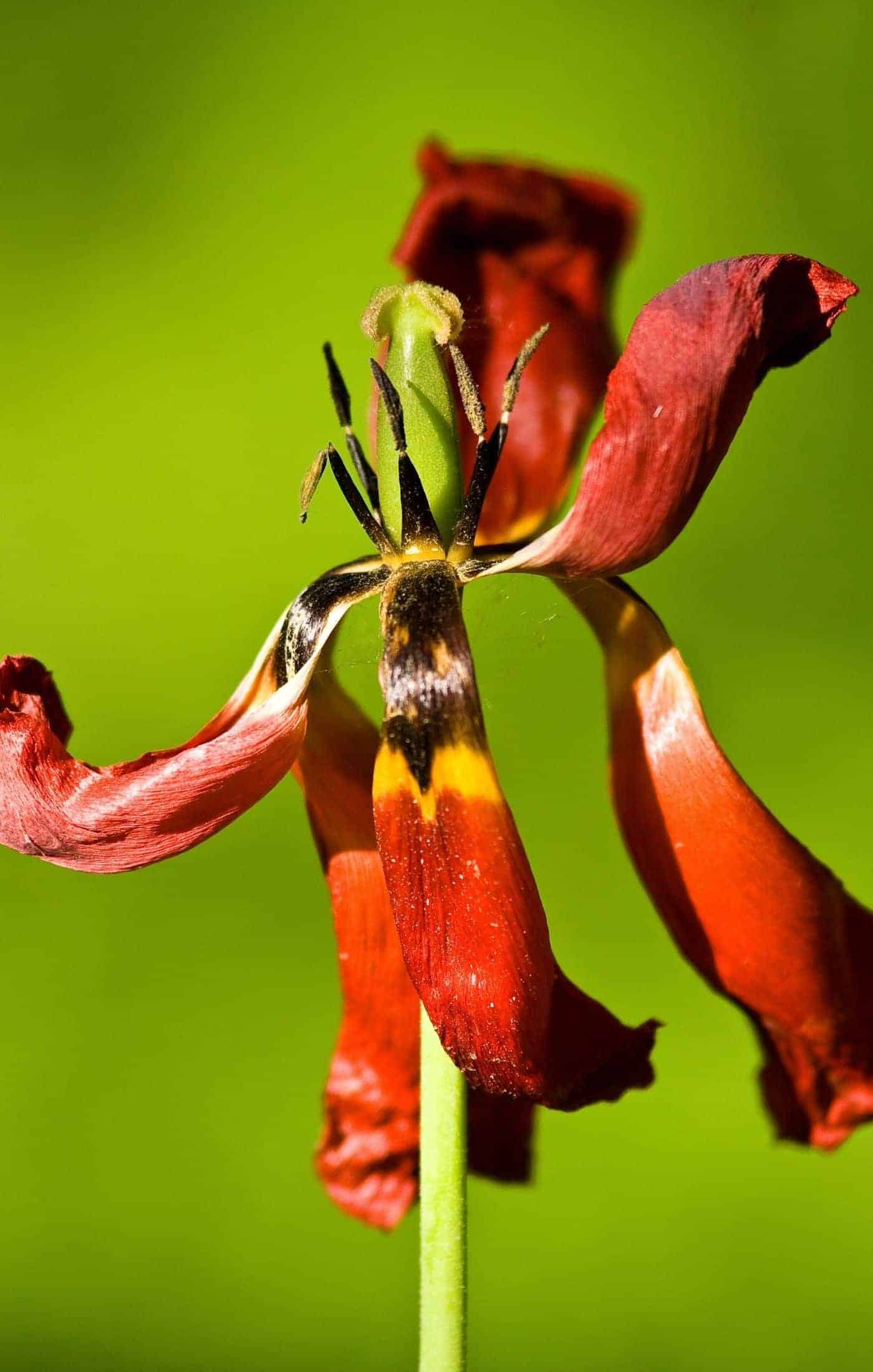
Fertilizing tulips right after they bloom
Applying a high-quality natural bulb fertilizer right after blooming can help the plant thrive in its development of offsets. Offsets are baby tulip bulbs that grow around the main mother bulb in the weeks after blooming. Feeding the tulips can be especially helpful if tulip bulbs are to be lifted and stored or for perennializing tulip varieties, which naturalize an area on their own.
Tulip foliage after blooming
Instead of removing the foliage after you cut off the dead flower head, leave the green foliage on the plant. The leaves are used for plant photosynthesis, which creates the energy needed to form future flower buds.
Leaving the leaves on for 4-6 weeks after blooming lets the plant absorb sunlight and produce energy which is stored below ground in the new tulip bulbs that are growing off the main bulb that was originally planted. By leaving the foliage and stems, you’re also allowing nutrients to sink back into the bulb from the leaves themselves so they can bloom again the next season.
Removing dead tulip leaves
Allow tulip foliage to die back naturally, and then remove the dead leaves. The leaves should be yellow or brown before you cut them off.
Leaves can be trimmed back at ground level if the bulbs are to be left in the ground over the summer. Foliage can be trimmed off lifted bulbs if it doesn’t fall away all on its own.
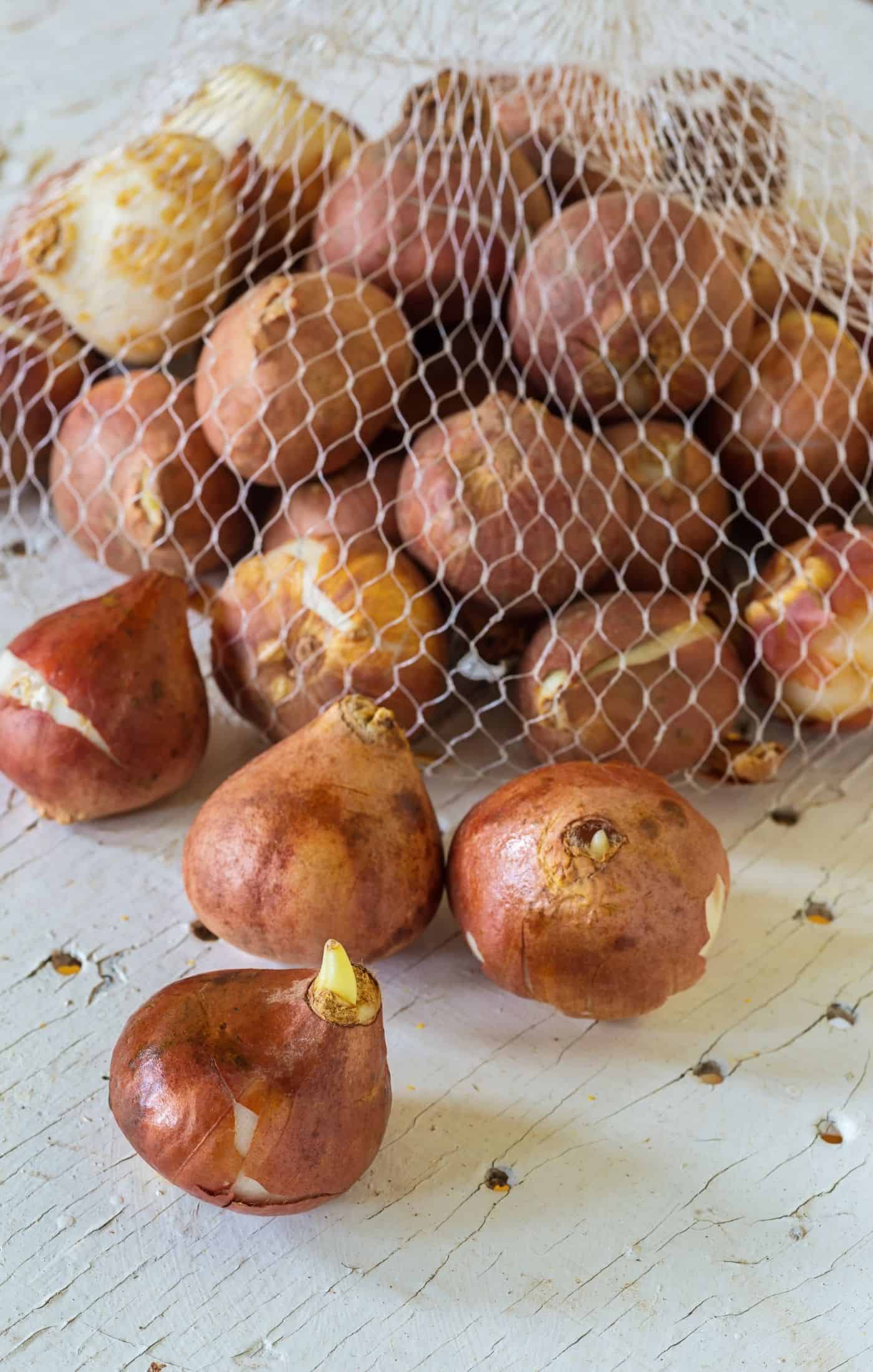
How to store tulip bulbs after the leaves die back
After 6-8 weeks have passed and/or the leaves have all died back to the ground, gently pull out the bulbs. You don’t want to dig them up too early, or they may not bloom again. Let the foliage die back all on its own before digging the bulbs up.
Brush the bulbs until most of the dirt comes off. Then let them dry in an airy location. Trim off any remaining spent foliage and store the bulbs in a well-ventilated space until it’s time for fall planting.
Do you have to take tulip bulbs out of the ground?
Not at all! You can most definitely leave your tulip bulbs in the ground so long as the conditions are suitable. Dormant tulip bulbs are right at home in hot and dry summer garden soil.
Tulip bulbs are native to a climate with dry summers. If you intend to water and fertilize the garden bed quite often in July-August, lifting your tulips for storage may be best. A summer of constant watering and fertilization may cause the bulbs to rot in dormancy. Lifting tulips also helps gardeners separate offsets from the mother bulb and replant the baby tulip bulbs to cover a larger area.
Potted tulip care after blooming
Potted tulips and tulips planted in a garden require similar care. You’ll want to get rid of the dead flower heads to prevent developing seeds from sucking up the bulb’s energy. Then ensure the foliage is getting lots of bright light and adequate water to grow. You can also fertilize immediately after flowering.
After 6-8 weeks, take the bulbs out, brush them off, and store them in a well-ventilated space until fall planting time.
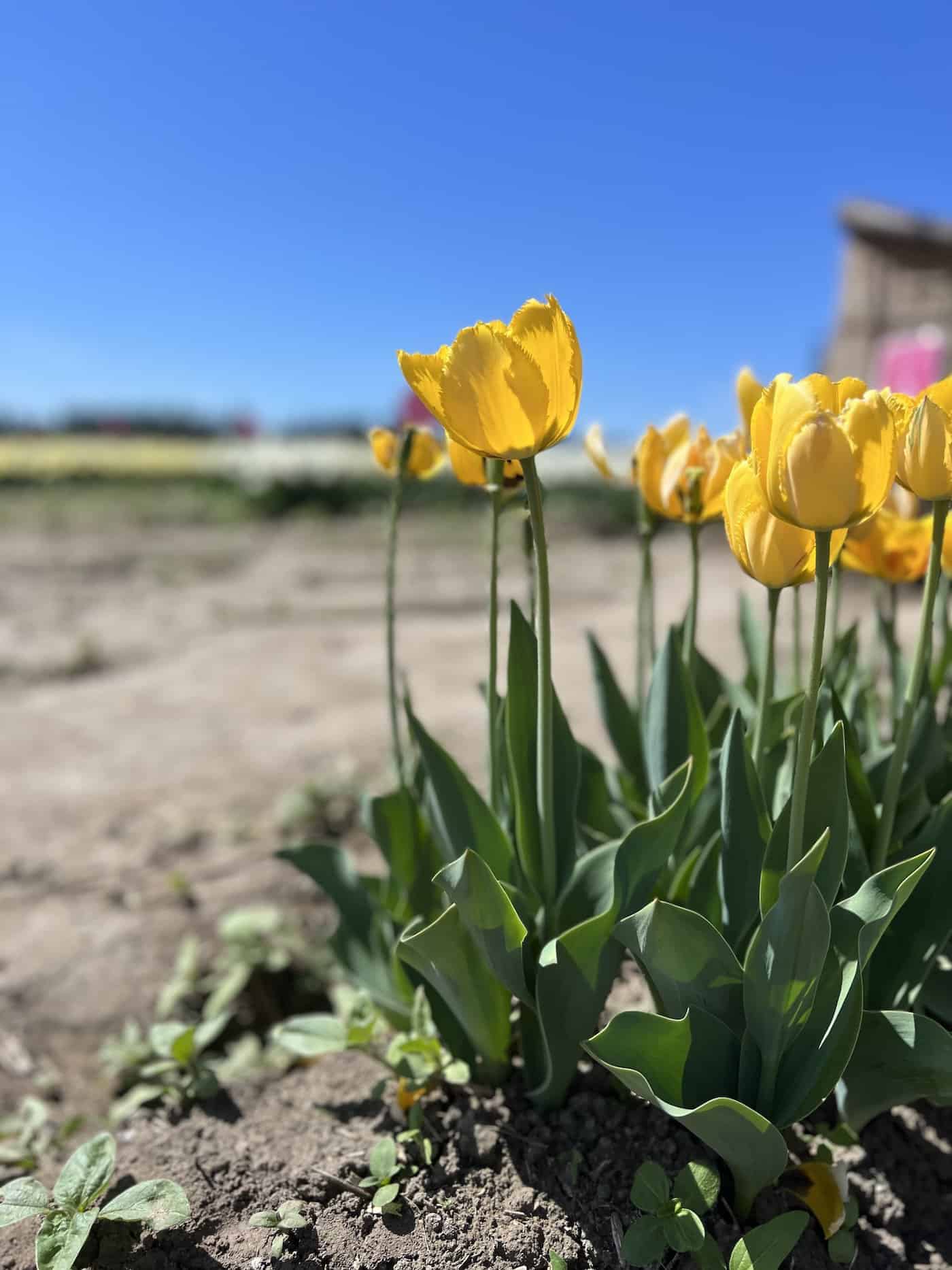
Growing long-lived tulips
Although many tulip varieties can become perennial if given the proper care, a few tulip varieties are better for regrowing year after year. For example, Darwin hybrid, parrot, single late, and species tulips are some of the best types of tulips for perennializing.
Ideal tulip soil conditions
The best soil for planting tulips is fluffy (full of air and free-draining) and slightly moist. Soil that drains well is best for tulips, so they don’t sit in water. You also want the soil to be porous enough to allow aeration throughout the soil. If the soil is too dense, moisture can build up, causing the bulbs to rot. The soil should also be loose enough to allow nutrients to reach the bulbs to encourage regrowth.
After spring is over and your bulbs are in the ground, you want to keep the soil relatively dry without fertilizing so the flowers don’t bloom too early. The soil will still be slightly wet from winter, so no extra water is usually needed unless you have a very dry summer season.
To ensure your tulip bulbs regrow the next season, you can also measure the acidity of the soil. Tulips grow best in slightly neutral to acidic soil. You can measure the pH with a garden soil test. If your soil is too basic or alkaline, you can add acidic mulch, peat moss, or animal manure to the soil.
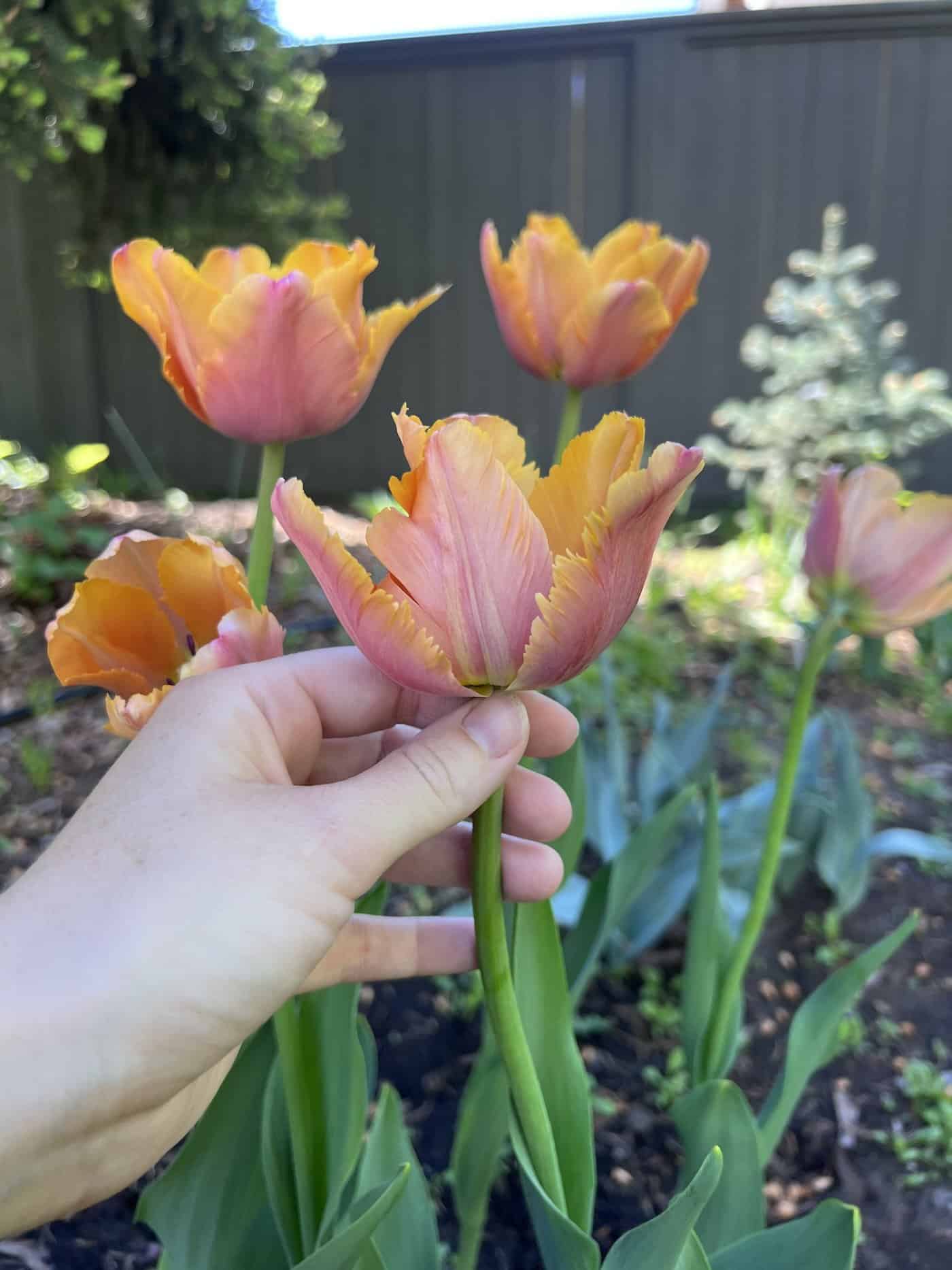
Other summertime tulip tasks
Once the dead flowers have been snipped off, the leaves have been allowed to die back naturally, and the tulip bulbs have gone into heat dormancy, there’s not much else to do until the fall. Fall is the season for planting tulip bulbs, and many of the most popular tulip bulbs for sale tend to sell out in July or August (before fall planting even begins)!
Start by making notes in the springtime of your favorite types and varieties of tulips while they are blooming in local gardens, at tulip festivals, and on social media. Take some time in the spring or early summer to order online before sought-after bulbs sell out. Most shippers store them for you all summer and then mail you the bulbs at the right time for autumn planting in your local climate.


